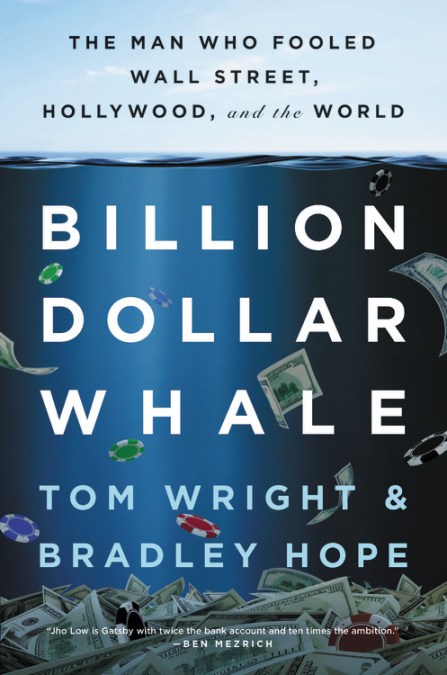The Man Who Fooled Wall Street, Hollywood, and the World
In 2009, with the dust yet to settle on the financial crisis, a baby-faced, seemingly mild-mannered Wharton grad began setting in motion a fraud of unprecedented gall and magnitude – one that would come to symbolize the next great threat to the global financial system. His name is Jho Low, a man whose behavior was so preposterous he might seem made up.
An epic true-tale of hubris and greed from two Pulitzer-finalist Wall Street Journal reporters, Billion Dollar Whale reveals how a young social climber pulled off one of the biggest financial heists in history–right under the nose of the global financial industry–exposing the shocking secret nexus of elite wealth, banking, Hollywood, and politicsThis book is specially helpful to understand our times. There are value creators and at the same time value extractors. Beyond them there is the greatest fraudster, Jho Low, a guy that stole $3.5 billion from Malaysian sovereign fund 1MDB, and helped former Malaysia president to get $700m.The total amount of the heist could be $6.5 billion, 2.5% of Malaysian GDP. If you want to know the details, just read the book.
It is strongly recommended to understand the corruption of the global financial system and audit firms (Goldman Sachs, Deloitte et al.). This guy would not have been able to commit any theft without their help.
Once you have started the book it will be difficult to stop. Right now, there are others following Jho Low's path and value extractors are among us. Our institutions are extremely fragile tackling these issues. Just take this week cum/ex fraud:.
The German finance ministry said it was aware of 418 different cases of cum-ex tax fraud with a combined value of €5.7bn, adding that any guess about the total damage caused was “speculation” as the investigations were still ongoing.
An investigation published on Thursday by Correctiv, a German non-profit investigative journalism group, and 19 news organisations, cited leaked spreadsheets that show “an organised theft from the tax coffers of at least ten European states, besides Germany” that it claimed had cost taxpayers about €55.2bn.



